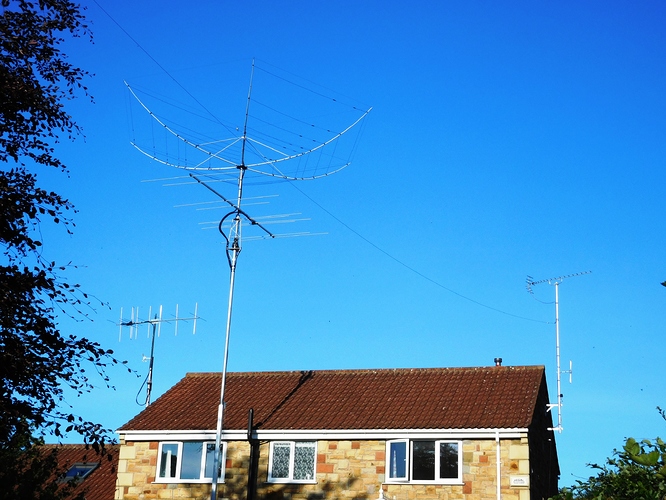I’m looking to work DX as well as chase SOTA on 20m. I’m seriously considering putting up a beam (or some kind of directional high gain antenna).
This will be my first HF beam & after several hours sifting through all of the options from various suppliers I’m feeling a little bewildered!
I’m primarily looking to work DX into US, Japan, Australia, Africa, UAE etc and give myself a bit more of a fighting chance chasing SOTA on 20m.
What beams do other SOTA chasers use on 20m?
Here are my criteria/restrictions:-
-
Budget is limited to £1000 absolute maximum, preferably less than £500 but would consider stretching the budget if there was a decent antenna worth the extra cash
-
Space is a bit tight. I reckon that I can get away with a turning radius up to about 5m
-
I have a reasonably substantial 12 meter tall mast which is concreted in to the ground (2mx2m concrete base, which is 1m deep). It should take a fair bit of weight, but I don’t want to push my luck! Let’s set a very conservative weight limit of around 15-20kg (although I suspect that the mast would handle 30kg plus).
From my research so far, I’ve got the following possibilities on the short list…
Mono-banders:-
-
ZX20-3 which is apparently designed by ON4UN, who wrote the book on DXing (very literally), so I would hope that it’s a good antenna!!!
Turning radius is 5.6 (slightly bigger than my limit of 5m) but might be able to make it work if I move/remove the VHF/UHF colinear. -
20m Moxon from InnovAntennas.
Has good front-to-back rejection, is smaller than most of the others, but has a slightly lower forward gain. That said, I’ve heard several good comments from people who have used them.It’s also the cheapest of the lot @ £300 (not sure if the cheap price should be causing alarm bells to ring)?!?!?!
Tri-banders (the extra bands would probably be useful, but I’m only really interested in 20M):-
-
G3TXQ Hexbean (made by several manufacturers)
Heard a lot of people raving about these. Apparently they are very popular, especially for people with limited space. Much less forward gain than the other antennas though, although still fairly good front-to-back. -
Cushcraft A3S
On paper, it seems to be on a par with the two mono-banders listed above, giving me 21MHz & 28MHz to play with aswell as 20m. It is however more expensive @ £700 -
OptiBeam OB6-3M
On paper this seems to have the best specs, but is also the most expensive @ £839. I guess you get what you pay for but I’m not sure if I can justify the additional cost over the other options.
There seem to be several videos on YouTube made by people who own these, but no reviews as such.
Your thoughts?
I’m particularly interested in hearing from anyone who has hands on experience with any of the beams listed above.
